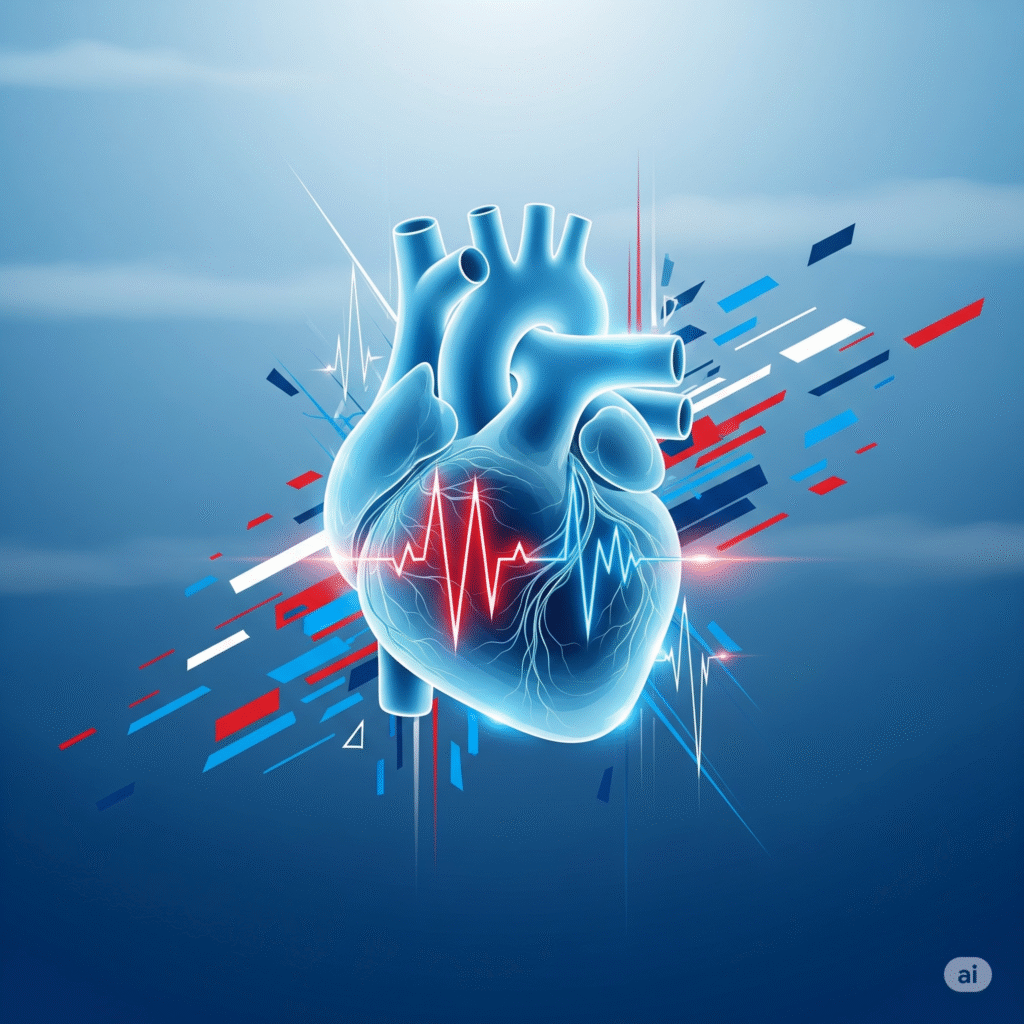Cardiac Arrhythmias
Introduction
Cardiac arrhythmias are abnormal heart rhythms caused by disturbances in the heart’s electrical system. These irregular rhythms can make the heart beat too fast (tachycardia), too slow (bradycardia), or erratically. Arrhythmias may be harmless, but some can be serious or even life-threatening, affecting the heart’s ability to pump blood efficiently.

Types of Cardiac Arrhythmias:
Atrial Fibrillation
Rapid, irregular electrical signals in the atria cause an uncoordinated, fast heartbeat.
Bradycardia
A slow heart rate, usually below 60 beats per minute, often due to problems in the sinus node.
Ventricular Tachycardia
Fast heart rhythm originating from the ventricles that may impair blood flow and lead to cardiac arrest.
Supraventricular Tachycardia
Abnormally fast heart rhythm starting above the ventricles, often due to abnormal electrical pathways
Causes Cardiac Arrhythmias
- Coronary artery disease reduces blood flow, irritates the heart rhythm.
- Hypertension stress causes heart, abnormal electrical activity.
- Electrolyte imbalance interferes with heart electrical signal transmission.
- Heart attack damages tissue, obstructing normal electrical conduction routes.
- Cardiomyopathy changes the heart muscle, causing irregular heartbeat.
- Thyroid disorders increase heart rate and rhythm abnormalities.
- The misuse of alcohol disturbs the heart, triggering irregular heart rhythm.
- Drug abuse is more than the heart, causing abnormal electrical activity.
- Some drugs affect the heart rhythm by affecting signal routes.
- Sleep apnea causes oxygen drops, emphasizing heart rhythm control.
- Myocarditis replaces heart tissue, changing electrical conduction.
Clinical features of Cardiac Arrhythmias:
Palpitations
Rapid, flutter, or irregular heartbeat sensation in chest.
Dizziness
due to a decrease in blood flow to the brain due to irregular heartbeat.
Shortness of breath
Disabled heart pumping supplies insufficient oxygen to the lungs and the body.
Chest pain
occurs when arrhythmia affects blood supply to the heart muscle.
Fainting (synthetic)
A sudden loss of consciousness due to blood pressure or fall in heart production.
Symptoms associated with Cardiac Arrhythmias:
- Fast or irregular heartbeat looked fast in the chest
- unusually tired without exertion
- Blood in urine
- Shortness of breath during rest or activity
- discomfort during irregular heartbeats
- Irregular heartbeat
- Dizziness
- A feeling of anxiety or adjacent doom
Investigations in Cardiac Arrhythmias
- Check electrolyte levels, thyroid function, and heart-related enzymes.
A portable ECG device worn for 24–48 hours to monitor irregular heartbeats.
Worn for weeks; records heart rhythm during symptoms.
Uses ultrasound to assess heart structure and function.
Invasive test to map electrical signals and locate arrhythmia origin.
Monitors heart rhythm during physical exertion to provoke arrhythmias.
Consider with obstructive urinary symptoms, persistent haematuria, family history of polycystic kidney disease or progressive CKD. Small kidneys suggest chronicity. Asymmetric renal size suggests renovascular or congenital disease
Provides detailed images of heart structures and tissues.
